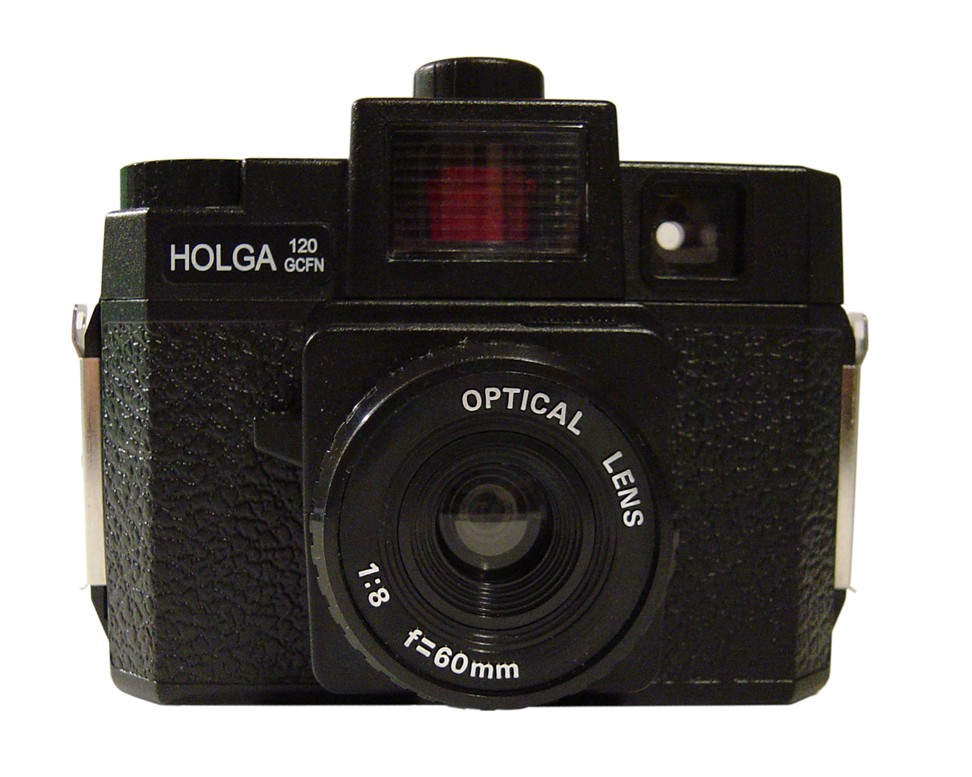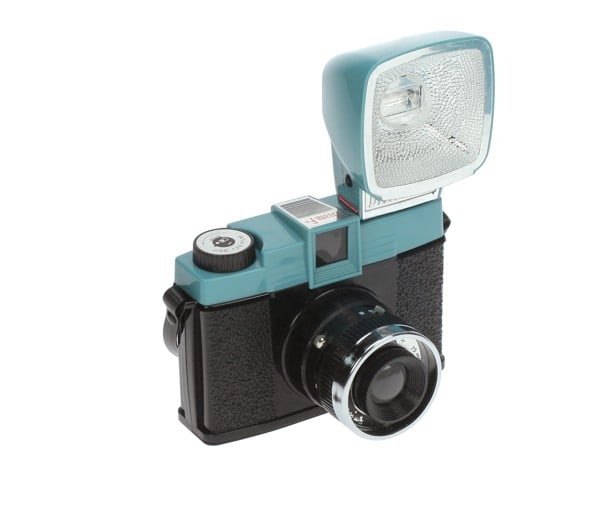
The Lomography tribe: how digital natives fell in love with analogue photography and cheap cameras’ imperfect shots
Lomography takes its name from the Lomo, a cheap, Soviet-produced camera whose imperfect shots offer an unfiltered view of life. Founders of the movement 25 years ago reflect on how it took off among curious digital natives

Analogue photography is not dead, say the co-founders of Lomography, which morphed from a simple non-profit society centred around sharing non-traditional photography into an international brand selling film, analogue cameras and accessories in an almost completely digital age.
Lomography’s history can be traced back to 1991. That year a group of students from Vienna, Austria, including Sally Bibawy and Matthias Fiegl, found a small, cheap, communist-era camera built in the USSR for sale in a camera shop in Prague. The camera, the Lomo LC-A, was relatively unknown at the time, but its Soviet production meant it was cheap, and the group bought a few to bring back with them.
Most of the photos produced by the camera would traditionally be considered failures. Light would leak into the sides of the camera, causing certain areas of the film to become overexposed, known as “light leaks”. Sometimes the photos would come out in strange, unnatural hues once developed.
Their discovery of this camera could not have happened at better time, Bibawy and Fiegl say. Film was cheap to develop, and almost anyone could afford a camera. But with photography comes traditional rules, such as getting the framing right, capturing careful and precise shots, and tossing photos that suffered from light leaks or other development glitches.
Bibawy and Fiegl wanted to throw those rules out. They created the Lomographic Society, named after the quirky camera they stumbled upon. The society held exhibitions that showed off their new approach, which featured walls full of Lomographic shots, without photographer credits – which Fiegl describes as “democratic”.

They wanted to change how people looked at photography, and set out to prove that it was not only for professionals: anyone could carry around a camera and be pleased with the results. Lomography was not only for people who considered themselves photographers – it was for anyone with a camera.
“That was a time when the average person shot, like, one-and-a-half film rolls per year – some pictures at your birthday party, and the rest of the film at Christmas time,” Bibawy says. “We communicated completely the opposite, and told people ‘take it everywhere you go, put it in your pocket and shoot wherever you are. It’s social.’”

Somewhat ironically for a group that wanted to get rid of rules in photography, they came up with their own set of Lomographic rules, such as “take your camera everywhere you go”, “try the shot from the hip”, “don’t think” and “don’t worry about any rules”.
Shoot what you want, and don’t care about the rules, and like or dislike your picture
Photography tends to have a high barrier to entry: cameras can be expensive, and lens prices add up. This style of photography was affordable and accessible to anyone with a cheap camera in their pocket – and they were told not to worry about messing up.
“In terms of the visual outcomes of photography, it was us who told people a picture that is out of focus can be a very nice photo,” Bibawy says. “[In other contexts] a picture with light leaks would not be imaginable … In the labs there were people sitting, cutting out these pictures. But we started to tell people, ‘Look at this picture – it’s fantastic with the light leak, this is even more valuable because it has a special situation which you did not influence.’”

This was reassuring to people who were afraid of trying photography for fear of messing up, the duo say. Just as today anyone with a phone in their pocket can document their lives without needing to call themself a photographer, anyone could carry a camera around and obtain aesthetically pleasing results without being traditionally trained.
“Shoot what you want, and don’t care about the rules, and like or dislike your picture,” Fiegl says. “You define what’s a good picture, not somebody else.”
Their methods appeared to resonate with people, and demand for the cameras grew. The Lomographic Society agreed upon a deal with the Lomo factory in St Petersburg: the Russian factory would supply the group with cameras, which would then be re-sold in various Lomography stores that the group had begun to spread.

But the factory started to have financial troubles after the collapse of the USSR and it seemed it would need to cease production. Eventually, Vladimir Putin, then the deputy mayor of St Petersburg, stepped in and offered a tax break for Lomo in exchange for a higher buying price for Lomography. The solution worked for a while, but production eventually moved to a Chinese factory in the early 2000s.
The business soon became international, with Lomography stores popping up in places such as Hong Kong and New York, and the product line began to grow as well.
No longer only producing the LC-A, the camera that started the movement, the company started distributing other cheap cameras such as the Holga and Diana (both from Hong Kong) as well as medium-format 120 film. It even reintroduced the 110 film format that had previously been discontinued by other film manufacturers.
This is not a trend. Now, finally, analogue photography is getting a place within photography
Film photography has seen its ups and downs since the introduction of digital photography. For a while, it seemed like analogue photography would soon become a thing of the past. Somehow, Lomography survived.
“I think one reason why we are still here … we are 25 years old, which is really old for today’s “young” company structures … I think we were just always driven by partly love, but also the pressure to survive,” Bibawy says. “We were in a dying field basically, half of our time, or longer even.”
Sticking through it eventually proved to be worth it, though, as film appears to be making a comeback – even with younger photographers who weren’t alive to see the prime of analogue photography. However, the reasons behind this comeback aren’t entirely clear. Bibawy and Fiegl feel that it has something to do with the novelty of film after growing up in a digital age.
“They somehow discover something new, which is really complicated, but it worked out,” Bibawy says. “And today it’s the surprise effect. People are so curious, it’s the curiosity in the person which brings them to buy and try something new.”

Curious, young and active people are exactly who the company considers its target demographic, Fiegl says, even though they likely did not become familiar with film until later in their lives.
“[Film] is really a novelty. For young people, digital natives, it’s a novelty. This is normal,” Fiegl says, pointing to his mobile phone. “They know how to operate it. The [analogue camera] is totally different, new for them. So they have to learn it.”
Sharing photos of daily life is certainly a huge part of social media now, while Instagram is filled with film-inspired filters reminiscent of the analogue age. One Instagram filter was even called “Lomo-fi” before being renamed, as a nod to Lomography’s now widespread presence.

But this type of sharing is nothing new to Lomography. It began with exhibitions showing daily life, offering an unfiltered and imperfect look into normal, sometimes extraordinary moments. Moving that experience online was only natural for them – and they got on board early. The company launched a website in 1996, in the early days of the internet, and began to sell cameras and distribute newsletters.
The community aspect of Lomography has always been crucial, and part of its website and social media presence is dedicated to showcasing the best of what Lomography’s community has to offer.
“There are 50 million pictures on our website, and most of them are tagged,” Fiegl says. “This is not just an archiving of all your photography, this is a selection of people who upload their best pictures and tag them.”
The company is currently anticipating the release of its Diana Instant Square, an instant camera that was funded through Kickstarter in a campaign that has raised more than US$280,000. The cameras are expected to ship this winter.
“For us as a big company, it’s important to get a very close relationship with the customer so … the feedback is still in the [Kickstarter] campaign, and then we can implement it in the product,” Fiegl says. “Then also we can sharpen our marketing strategy, how we launch the product, so we know what people really react to strongly.”
But for now, the company is riding film’s comeback.
“This is not a trend,” Bibawy says. “Now, finally, analogue photography is getting a place within photography. Until now everyone thought it was going to vanish. Now I think people are realising that it’s taking its place.”
Read the full story at Business Insider